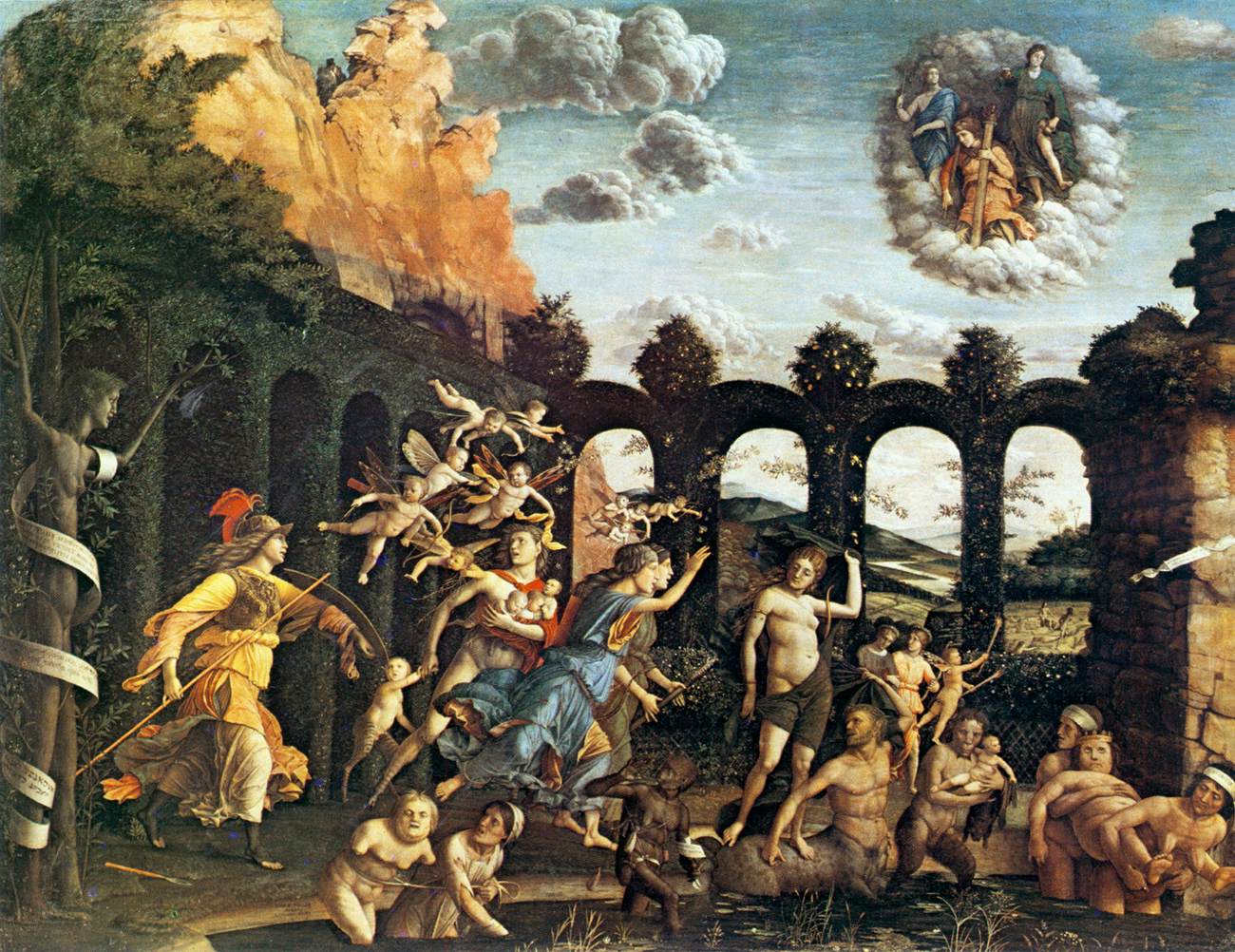Description
Pallas Expelling the Vices from the Garden of Virtue is a masterpiece by the Italian Renaissance artist Andrea Mantegna. The painting, measuring 160 x 192 cm, shows the Greek goddess of wisdom, Pallas Athena, driving vice out of the garden of virtue.
Mantegna's artistic style is evident in painting, with his technique of perspective and his ability to create three-dimensional figures. The composition of the work is impressive, with Pallas Athena in the center of the painting, surrounded by the figures of vices, which are represented in a grotesque and exaggerated manner.
The color used by Mantegna is vibrant and realistic. The shades of green and gold in the garden of virtue contrast with the dark and somber tones of vices. The shading technique used by Mantegna creates a sense of depth in the painting, making it appear more realistic.
The history of the painting is interesting: it was commissioned by the Marquis of Mantua, Francesco Gonzaga, in the 15th century. The work was created to decorate a room in the Ducal Palace of Mantua. The painting was later transferred to the National Gallery in London, where it is currently located.
There are some little-known aspects of painting. For example, the figure of Pallas Athena is based on an ancient statue that Mantegna had seen in Rome. Furthermore, it is believed that the vices depicted in the painting are based on real people Mantegna knew.
In short, Pallas Expelling the Vices from the Garden of Virtue is a masterpiece of the Italian Renaissance. Mantegna's ability to create three-dimensional figures and his shading technique are impressive. The composition and use of color are vibrant and realistic. The history and little-known aspects of the painting make it even more fascinating.

